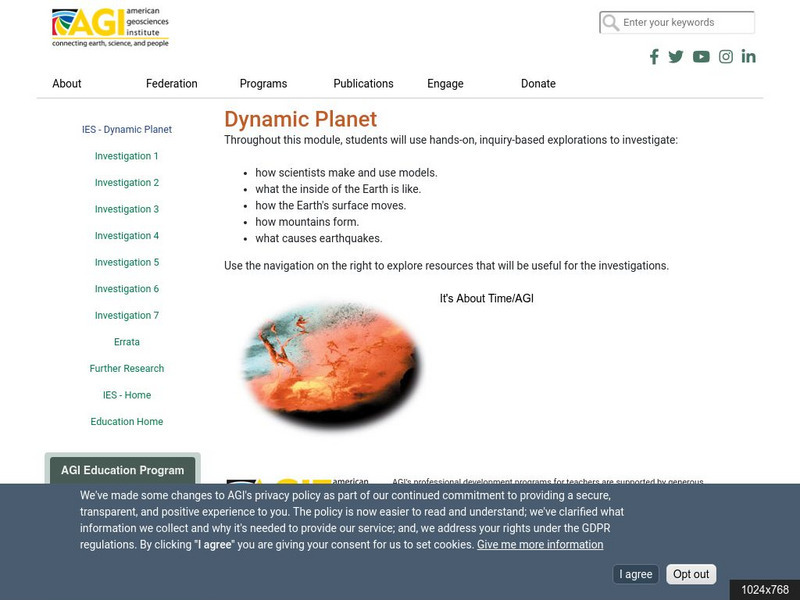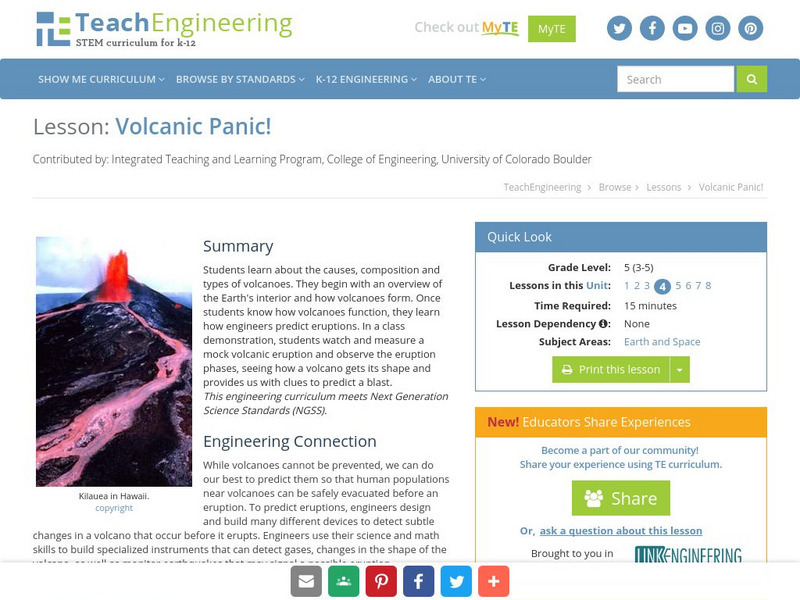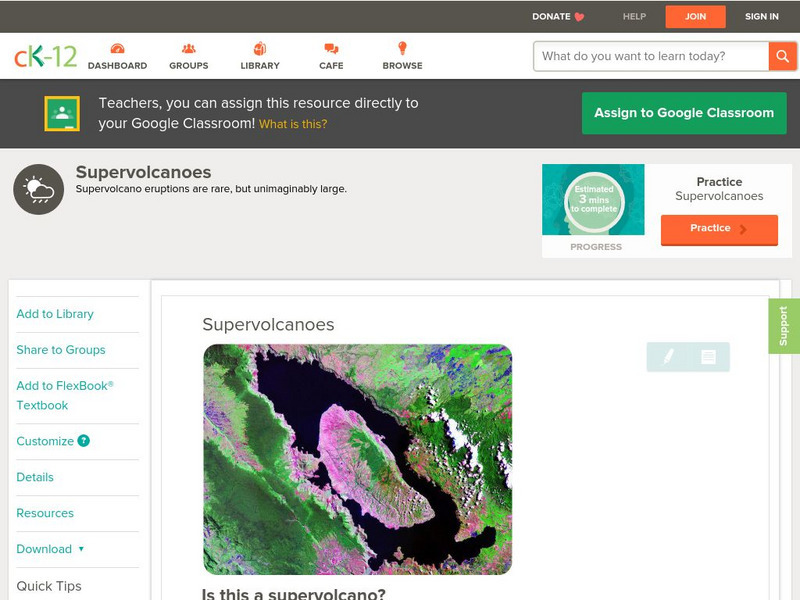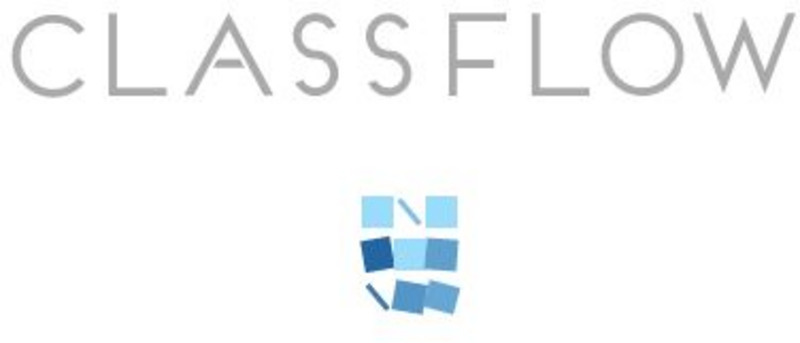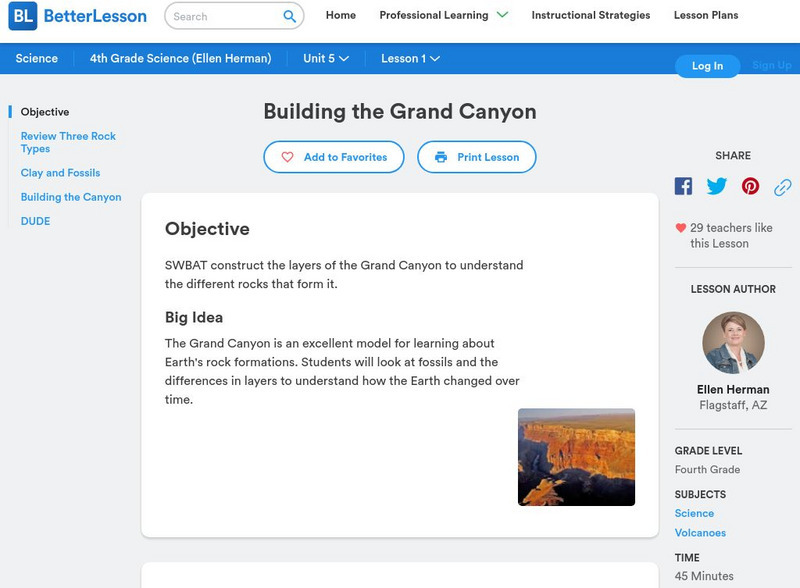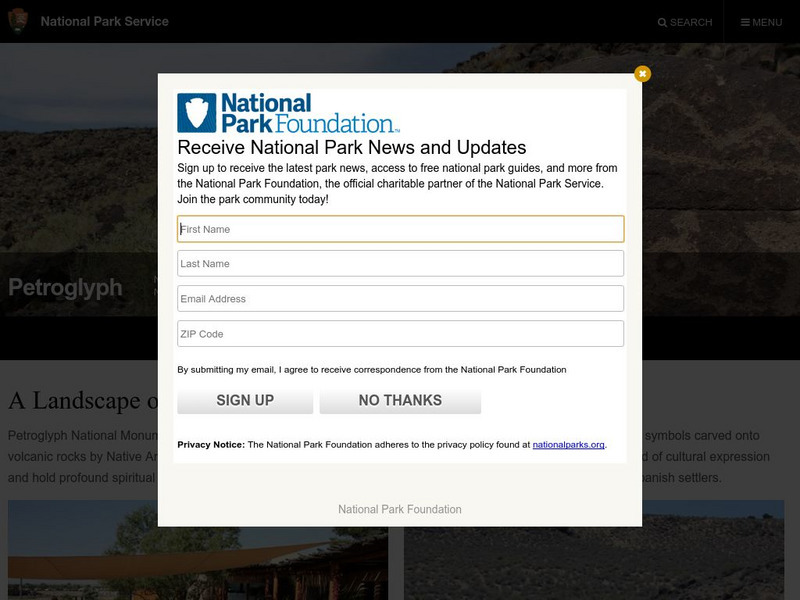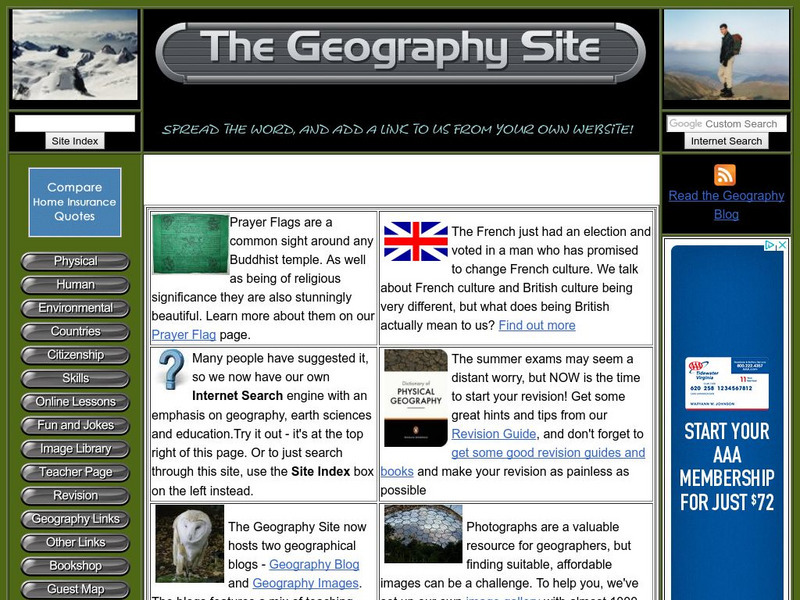Hi, what do you want to do?
HotChalk
Hot Chalk: Lesson Plans Page: Science Is a Volcanic Eruption!
This lesson plan is designed to teach young children about volcanoes by making a model volcano and having it erupt.
ClassFlow
Class Flow: Volcanoes
[Free Registration/Login Required] In this lesson students are given a brief description of a volcano and asked to identify the parts of the volcano.
Alabama Learning Exchange
Alex: Explosive Fun With Volcanoes
In this lesson the students will work in groups to make their own volcanoes and learn the different aspects of a volcano.
American Geosciences Institute
American Geosciences Institute: Dynamic Planet
Seven hands-on lessons module where students learn about our dynamic planet. These inquiry-based explorations investigate scientific models, earthquakes and seismic waves, Earth's interior, Earth movements, the lithosphere, plate...
Oregon State University
Osu: Volcano World: Layers of the Earth
This is a website not only on the mantle but also about all the layers of the earth.
Science Education Resource Center at Carleton College
Serc: Hotspot Lesson: Samoan Hotspot
Using the Hotspot Theory and Plate Velocities, students make comparisons between Hawaii and Samoa in an attempt to determine the volcanic origin of Samoa.
TeachEngineering
Teach Engineering: Volcanic Panic!
Students learn about the causes, composition and types of volcanoes. They begin with an overview of the Earth's interior and how volcanoes form. Once students know about how a volcano functions, they learn how engineers predict...
CK-12 Foundation
Ck 12: Earth Science: Supervolcanoes
[Free Registration/Login may be required to access all resource tools.] Supervolcanoes are unimaginably large volcanoes.
CK-12 Foundation
Ck 12: Earth Science: Supervolcanoes
[Free Registration/Login may be required to access all resource tools.] Supervolcanoes are unimaginably large volcanoes.
ClassFlow
Class Flow: Plate Tectonics Volcano
[Free Registration/Login Required] This lesson will take several class periods. This lesson begins to look at how volcanoes are created.
Climate Literacy
Clean: Mt. Pinatubo and the Atmosphere
This lesson explores the impact of volcanic eruptions on the atmosphere. Students will analyze three types of visual information: a graph of aerosol optical depth v. global temperature, a global map with temperature anomalies, and an ash...
Better Lesson
Better Lesson: Building the Grand Canyon
The Grand Canyon is an excellent model for learning about Earth's rock formations. Students will look at fossils and the differences in layers to understand how the Earth changed over time. Resources included are detailed instructions...
Other
Digital Library for Earth System Education: Teaching Box: Mountain Building
A suite of lessons focusing on all aspects of how mountains are formed. Inquiry-based exploration of mountain building includes the rock cycle, mountain formation, plate tectonics, earthquakes, volcanoes, erosion, rocks, minerals, and...
Curated OER
National Park Service: Petroglyph National Monument
Embrace the unique Petroglyph National Monument in New Mexico through this detailed resource featuring the Rio Grand Rift, petroglyphs, lesson plans and much more.
Other
New Mexico Bureau of Geology & Mineral Resources: Lite Geology
Lite Geology is a publication for teachers that is available intermittently and can be freely downloaded. Previous issues going back to 1992 are also posted. Lots of information about geology, particularly in New Mexico, along with...
Peace Corps
Peace Corps: This Is Tanzania
Students will learn about the history of volcanoes and wildlife in Tanzania in this lesson plan.
Science Education Resource Center at Carleton College
Serc: Yellowstone! A National Park on a Hot Spot
A lesson plan with an accompanying PowerPoint learning module for students where they learn about the volcanic features of Yellowstone National Park. They use spreadsheets to make various calculations, such as the volume of material...
Other
Chicago Science Group: Earth's Changing Surface Virtual Field Trip
Join Science Companion author Belinda Basca and her family as they explore the land forms in Hawaii from a helicopter! Includes suggestions for teacher lessons, student activities, and web resources.
abcteach
Abcteach: Earth
[Free Registration/Login Required] Ready made worksheets for any earth science unit on water cycles, the layers of the earth, or volcanoes.
Other
The Geography Site
The Geography Site offers many links for your geography research. Links offered are to physical geography, human geography, environment, online lessons, and much more.
CK-12 Foundation
Ck 12: Earth Science: Effusive Eruptions
[Free Registration/Login may be required to access all resource tools.] Effusive eruptions are relatively mild eruptions that produce lava flows.
Science Education Resource Center at Carleton College
Serc: Writing to Support the Theory of Plate Tectonics
This lesson helps students use images that depict earthquakes, seafloor ages, topography, and volcanoes, and then make a scientific argument supporting the Theory of Plate Tectonics.
TED Talks
Ted: Ted Ed: The Colossal Consequences of Supervolcanoes
In 1816, Europe and North America were plagued by heavy rains, odd-colored snow, famines, strange fogs and very cold weather well into June. Though many people believed it to be the apocalypse, this "year without a summer" was actually...
CK-12 Foundation
Ck 12: Earth Science: Predicting Volcanic Eruptions
[Free Registration/Login may be required to access all resource tools.] How scientists can predict volcanic eruptions.








